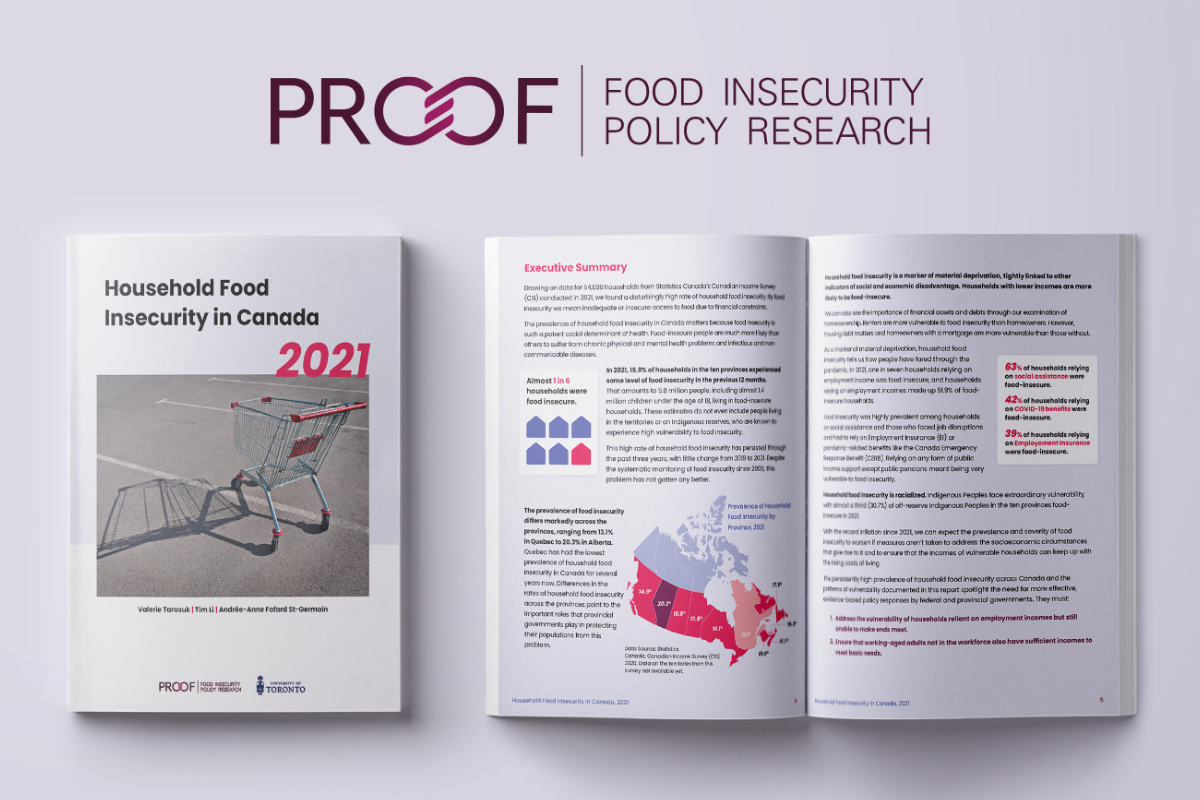Video: Household Food Insecurity in Canada, 2021
August 22, 2022

In this video, we highlight some of the key findings and takeaways from our report, Household Food Insecurity in Canada, 2021.
Transcript
In 2021, 5.8 million people, including 1.4 million children, in the ten provinces lived in food-insecure households.
When we talk about food insecurity in Canada, we’re talking about the inadequate or insecure access to food due to financial constraints.
That means almost 1 in 6 households experienced some form of food insecurity, from worrying about running out of food before there is money to buy more to, in the most extreme cases, not eating for whole days because of a lack of money.
These estimates don’t even include people living in the territories or on First Nations reserves, who are known to experience high vulnerability to food insecurity.
Some provinces are doing better than others, with the rate being as low as 13% in Quebec and as high as 20% in Alberta.
This is not a new problem in Canada. The rates of food insecurity were high before the pandemic and the latest data show it is has remained high from 2019 through 2021.
It’s continued this way for so long because not enough has been done to address it. At the core of this problem is inadequate incomes.
Our public policies have left low-income Canadians, particularly working age adults and their families, behind for a long time.
And now with the record levels of inflation, we can expect food insecurity to worsen if the incomes of vulnerable households don’t keep up with the costs of essentials.
It doesn’t have to be this way. Governments already have the tools in their toolbox – increasing social assistance, improving minimum wages and employment standards, re-examining Employment Insurance, and targeting more through income supports like the Canada Child Benefit and Canada Workers Benefit to those with the lowest incomes. It’s just that the necessary changes have been ignored.
The cost of this continued inaction is serious harm to people’s health and a large burden to our healthcare system since this deprivation is so tightly linked to all sorts of health problems and need for health care services.
We can reduce food insecurity, but only if we address the inadequacy of incomes in Canada, both from employment and our social safety net for working-age adults.
Read our new report, Household Food Insecurity in Canada, 2021, for more on the latest on this problem.
